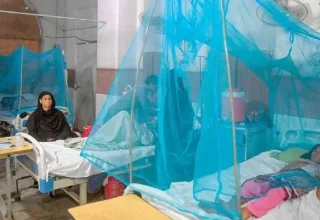
For the first time in its decades-long history, the iconic Barbie brand has introduced a doll with Type 1 diabetes aimed at promoting awareness and inclusion for children living with the condition.
Unveiled during the three-day Breakthrough T1D Children’s Congress held in Washington, the new Barbie Fashionista doll is equipped with medical tools commonly used by Type 1 diabetes (T1D) patients — including a wearable insulin pump, continuous glucose monitor (CGM), a mobile phone displaying a real-time glucose monitoring app, and a pastel blue handbag containing diabetes management essentials.
Dressed in a blue polka-dot top and miniskirt — a nod to the global symbol for diabetes awareness — the doll also features pink heart-shaped medical tape to keep the CGM in place, reflecting a growing trend among toy manufacturers to better represent children with chronic health conditions.
According to Mattel, the new Barbie is designed to reflect the experiences of more than 340,000 children and adolescents in the United States currently living with T1D.
The initiative is part of a broader effort by the toy company to support inclusive and empathetic play through its Fashionistas line.
“Barbie helps shape children’s early perceptions of the world, and by reflecting medical conditions like T1D, we ensure more kids can see themselves in the stories they imagine and the dolls they love,” said Krista Berger, Senior Vice President of Barbie and Global Head of Dolls at Mattel, in a press release issued Tuesday.
The Children’s Congress, organised by Breakthrough T1D — formerly known as JDRF — brings together children living with diabetes and their families from across the U.S. to advocate for continued federal funding for T1D research and education. The launch of the diabetic Barbie was one of the highlights of this year’s event.
Emily Mazerico, Director of Marketing for Breakthrough T1D and a person living with Type 1 diabetes herself, played a central role in the design process of the doll. She expressed hope that the doll would not only foster understanding but also empower young children who manage the daily challenges of diabetes.
“What makes this Barbie unique is that her CGM app displays a real blood sugar level of 130 mg/dl — which was the designer’s actual reading on the day the doll was created,” Mazerico revealed.
Medical professionals have praised the move, noting its potential to help reduce stigma and build empathy. Dr Sian Jones, co-founder of the Toybox Diversity Lab, remarked that children who engage with diverse toys tend to develop more inclusive attitudes. “When children use toys with medical conditions or disabilities, they become more empathetic and understanding of people with similar experiences in real life,” she said.
Mattel’s decision to expand its Fashionistas line with medically inclusive dolls reflects a broader shift in the global toy industry, as manufacturers face growing calls to diversify their product lines to better represent the realities of all children — including those with chronic illnesses, disabilities, and unique medical needs.
The new Barbie doll is already being seen as a step forward in dismantling stereotypes and normalising medical diversity in children’s play. Parents of children with T1D have welcomed the launch, calling it a long-awaited representation that can help their kids feel seen, included, and celebrated.



































